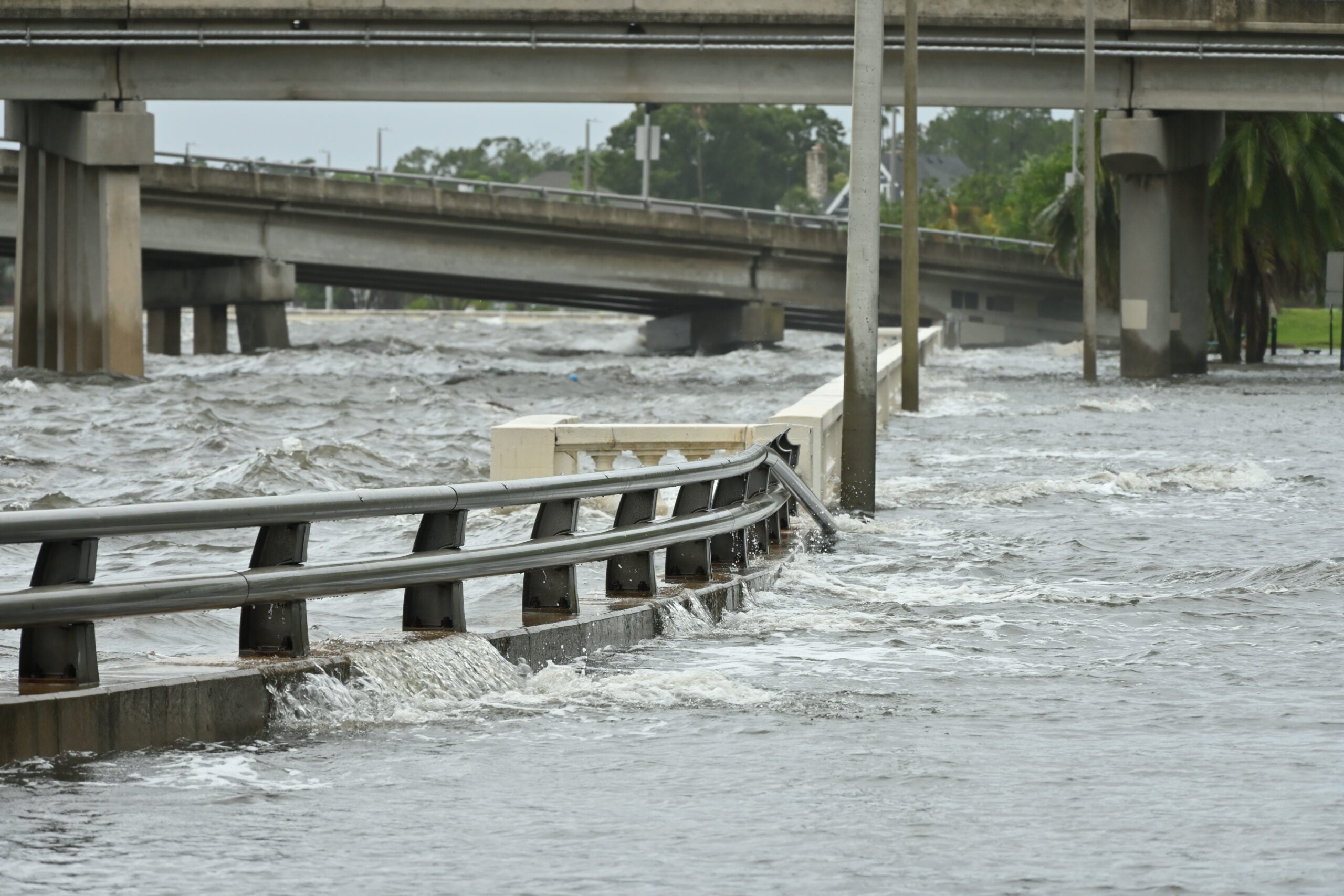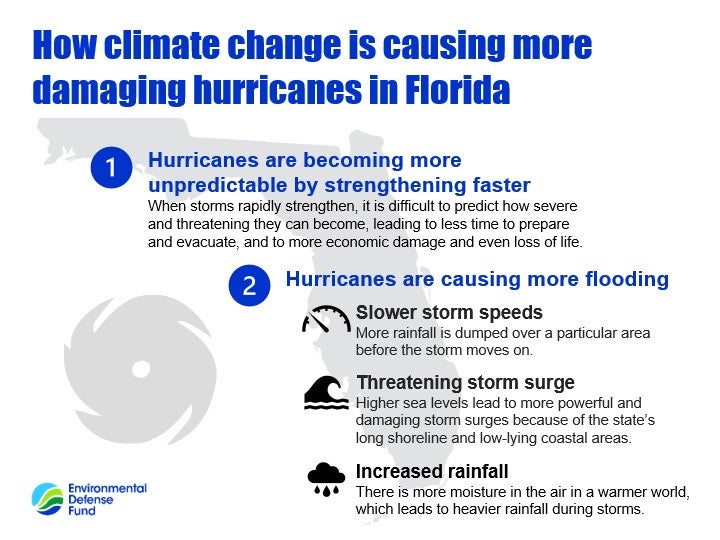(This post was co-authored by EDF Senior Climate Scientist Ilissa Ocko)
Hurricanes are complicated, and their characteristics depend on a number of factors, which makes it difficult to tease out certain trends and predict the future. But what is scientifically clear is that human-caused climate change is a key reason that hurricanes are more destructive – especially in Florida.
Hurricanes are becoming stronger faster. They are less predictable and thus more dangerous because there is less time to prepare and evacuate. Flooding from hurricanes is worsening due to higher sea level, more rainfall, and slower storm speeds.
Florida has always been more vulnerable to hurricanes and tropical storms than any other U.S. state because its exposed, southern location is surrounded by warm waters. There are almost twice as many hurricanes that hit Florida as Texas, the second most impacted state. But shifting atmosphere and ocean conditions from climate change – caused by heat-trapping gases emitted from human activities – are making hurricane season even worse for Floridians. Here’s how:
Hurricanes are becoming more unpredictable by strengthening faster
Worldwide, hurricanes are growing bigger and stronger as climate change heats up both the air and water. This is because hurricanes are fueled by warm water and humid air. One study shows that almost half of today’s North Atlantic hurricanes are reaching major intensity (Category 3, 4, or 5), which is 260% more than four decades ago.
Hurricanes are also becoming stronger faster, a phenomenon known as rapid intensification. In fact, several recent storms have gone from tropical storm to major hurricane overnight —something that used to be a rare occurrence. Scientists have found that climate change is leading to more favorable conditions for hurricanes to strengthen more quickly, such as warmer waters.
When storms rapidly strengthen, it is difficult to predict how severe and threatening they can become. The result is less time to prepare and evacuate, leading to more economic damage and even loss of life.
Every major hurricane to hit Florida since 2005 has strengthened rapidly. Hurricane Idalia, which hit Florida this year, went from a tropical storm to a Category 4 hurricane within 24 hours due to record high water temperatures. In 2022, Hurricane Ian – which went from a tropical storm to a Category 3 hurricane in 36 hours right before landfall in southwest Florida — became the second deadliest storm this century (after Katrina) and the costliest hurricane in Florida’s history.
Scientists expect that the rapid intensification of hurricanes will continue in the future unless drastic measures are taken to limit further climate change.
Hurricanes are causing more flooding
There is more flooding in Florida from hurricanes because storms now move slower, have more threatening storm surges, and bring increased rainfall:
- Slower storm speeds – Storms have been traveling at slower speeds in the Atlantic since the mid-20th century. While the wind speeds in a hurricane are getting faster, the movement of the hurricane from one location to another has been slower. Storms are pushed by the jet stream, and the jet stream is slowing down likely from climate change-induced warming in the Arctic. Slow-moving storms bring a higher risk of flooding as more rainfall is dumped over a particular area before the storm moves on. We expect more storms to slow down in the future with further warming.
- Threatening storm surge — Higher sea levels in Florida lead to more powerful and damaging storm surges from hurricanes because of the state’s long shoreline and low-lying coastal areas. The result is more coastal flooding and, consequently, property and infrastructure damage. Sea level has already risen by as much as eight inches in Florida since 1950 due to glaciers and ice sheets melting. With more warming in the absence of drastic climate action, sea level could rise by another six inches in the next 15 years.
- Increased rainfall — There is more moisture in the air in a warmer world, which leads to heavier rainfall during storms. In the north Atlantic ocean, where Florida sits, rainfall from tropical storms has increased by almost 25% in the last couple decades, and is expected to increase by about 20% more in the future due to climate change.
How we can prevent more damaging storms in the future
The good news is that we know what is causing climate change. Greenhouse gas emissions from human activities are the leading cause, and the reality is that Florida is one of the top greenhouse gas-emitting U.S. states. We need to take immediate actions to reduce our emissions of greenhouse gases in order to slow down and limit warming in the coming decades, and ultimately stabilize global temperatures.











